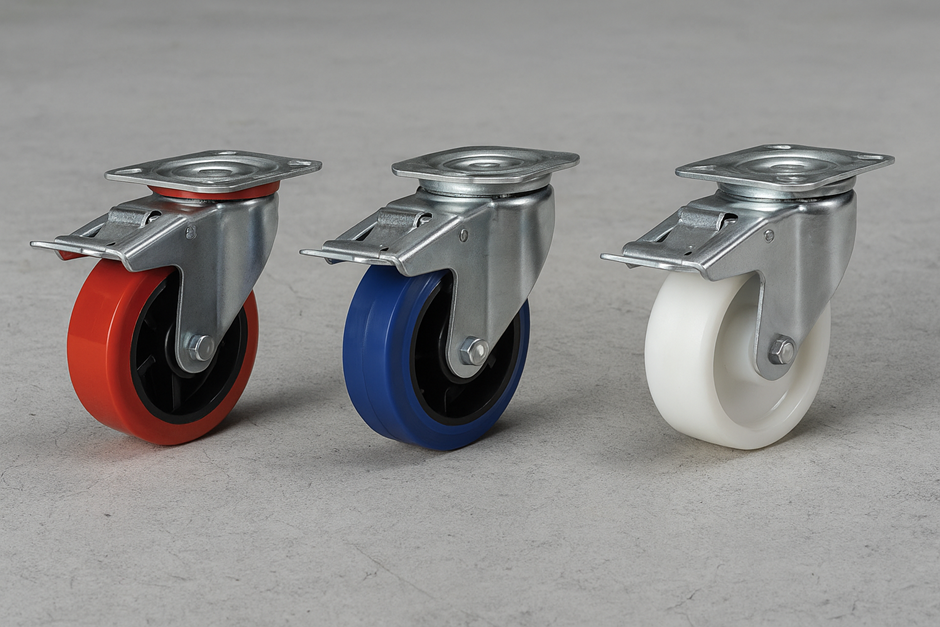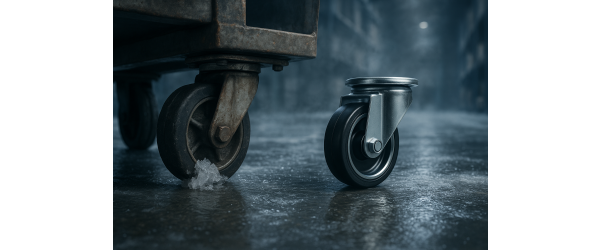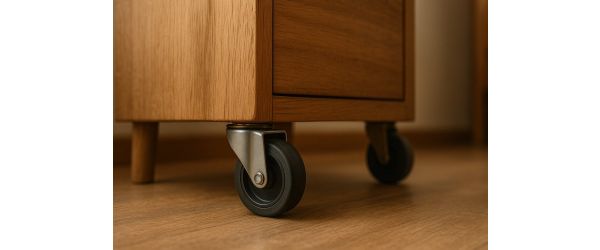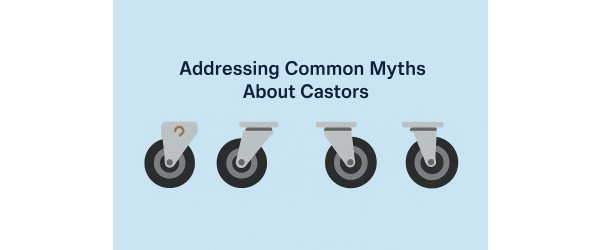When selecting castors for trolleys, equipment, or mobile workstations, one of the most common questions we hear at Castors Online
is: Do I need a brake? If you're considering a 100mm swivel castor with brake, particularly in blue elastic rubber, you're already making a smart choice for versatility, performance, and floor protection. But how do you decide whether the brake is necessary?
In this article, we’ll help you weigh the pros and cons of choosing a braked versus non-braked 100mm blue elastic rubber swivel castor, so you can make the best decision for your environment.
The Advantages of Blue Elastic Rubber Castors
Before we dive into brakes, let’s briefly highlight why blue elastic rubber wheels are so popular:
- Quiet operation – ideal for noise-sensitive areas
- Non-marking and floor-friendly
- Shock-absorbing – perfect for uneven surfaces
- Excellent grip – reduces slippage on smooth floors
The 100mm swivel castor size is widely used due to its balance of mobility and stability, making it suitable for medium-duty applications in both industrial and commercial settings.
When to Choose a 100mm Swivel Castor with Brake
A 100mm swivel castor with brake adds an additional layer of control and safety. The integrated brake locks both the wheel and the swivel head (in most dual-locking designs), preventing unwanted movement on sloped or unstable floors.
Ideal Use Cases:
- Mobile workbenches – Keep the unit stationary while in use
- Hospital or laboratory equipment – Safety-critical settings where accidental movement must be avoided
- Retail displays – Secure positioning once wheeled into place
- Transport trolleys – Load and unload safely without rollaway
Benefits of Choosing the Braked Option:
- Enhances user safety
- Prevents damage caused by unintended movement
- Provides positional accuracy in confined areas
- Useful on slight inclines or sloped flooring
When a Standard 100mm Swivel Castor is Enough
If your application involves frequent movement or you're operating on consistently flat, level ground, you may not require a braking mechanism.
Ideal Use Cases:
- Warehouse carts that are constantly in motion
- Delivery trolleys where stopping is temporary
- Light-duty furniture with low risk of movement
Why Skip the Brake?
- Lower cost per castor
- Reduced maintenance
- Slightly lighter in weight
That said, some users prefer a mix—two braked castors on one side, two unbraked on the other—providing flexibility without fully sacrificing mobility.
Final Thoughts
Choosing between a 100mm swivel castor with brake and one without boils down to safety, control, and how the castor will be used in practice. Braked castors are a small investment that can prevent accidents, enhance usability, and ensure your equipment stays precisely where you want it.
At Castors Online, we offer a full range of 100mm swivel castors—with and without brakes—featuring high-quality blue elastic rubber wheels and robust housings for long-term performance.
Explore our collection of 100mm swivel castors with brake or contact our team to help you build the right configuration for your needs.










